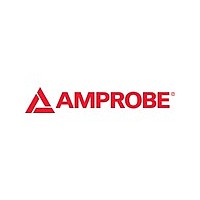TIC 300CC Amprobe, TIC 300CC Datasheet - Page 8

TIC 300CC
Manufacturer Part Number
TIC 300CC
Description
DETECTOR AC VOLTAGE 30-1500V
Manufacturer
Amprobe
Specifications of TIC 300CC
Voltage Range
30 ~ 1500VAC
Display Type
Audible, Light
Includes
9VDC Power Supply
Lead Free Status / RoHS Status
Not applicable / Not applicable
Other names
3051329
2. An approximately once per second “beep” will be heard,
indication the unit is on and operating. TIC 300HV- The LED
visual indicator will flash in concert with the “beep” rate.
3. Approach a fluorescent lamp, or known AC conductor, to
ensure the tool is working properly.
4. Place the tip of the probe on or near the circuit to be tested.
If voltage is present, the “beep” rate will increase to a rapid
beep or siren.
The slower the beep rate, the lower the voltage. If no increase
in “beep” rate is heard, AC voltage is not present.
TIC 300HV- When probing for voltage higher than 1500 VAC
use proper safety equipment and, after determining the
existence of voltage in the Low range, switch to the High range.
TIC 300CC ADDITIONAL TESTS
To Check Circuit Continuity
1. Attach the included test leads to the input jack on the
bottom of the back side of the unit.
2. Switch the unit on and verify the normal, once per
second “beep”.
3. Clip the test leads together and verify that a steady siren, or
whistle, occurs. The TIC 300CC checks continuity up to 1M Ω.
4. Connect the clip leads to the circuit to be tested. A steady
siren, or whistle indicates continuity: a normal “beep” rate
indicates open circuit.
To Check High Value Capacitors
1. De-energize the circuit containing the capacitor to be tested.
2. Attach the test clip harness to the jack on the bottom of the
back side of the unit.
3. With the unit switched OFF, disconnect one lead of the
capacitor and connect the test clips to both leads of the capacitor.
4. Switch to ON-
Capacitor is Good- first a constant beep tone, then slow
“beeps”. The duration of the whistle in seconds is proportional
to the capacitance in the microfarads (µF).
4










